19th C Leon Marti Cherub Clock and Garniture Set
19th C Leon Marti Cherub Clock and Garniture Set
No se pudo cargar la disponibilidad de retiro
Compartir
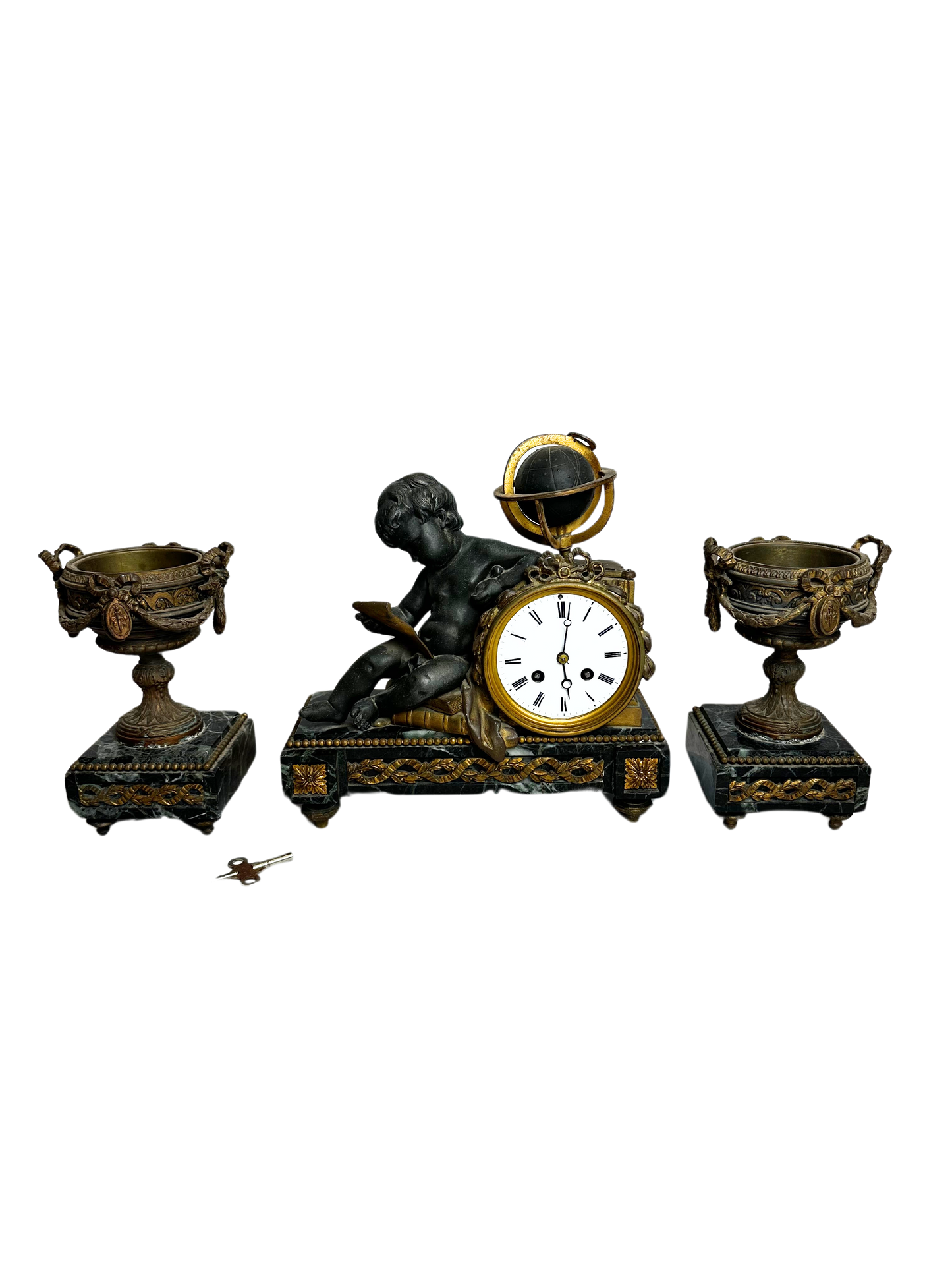
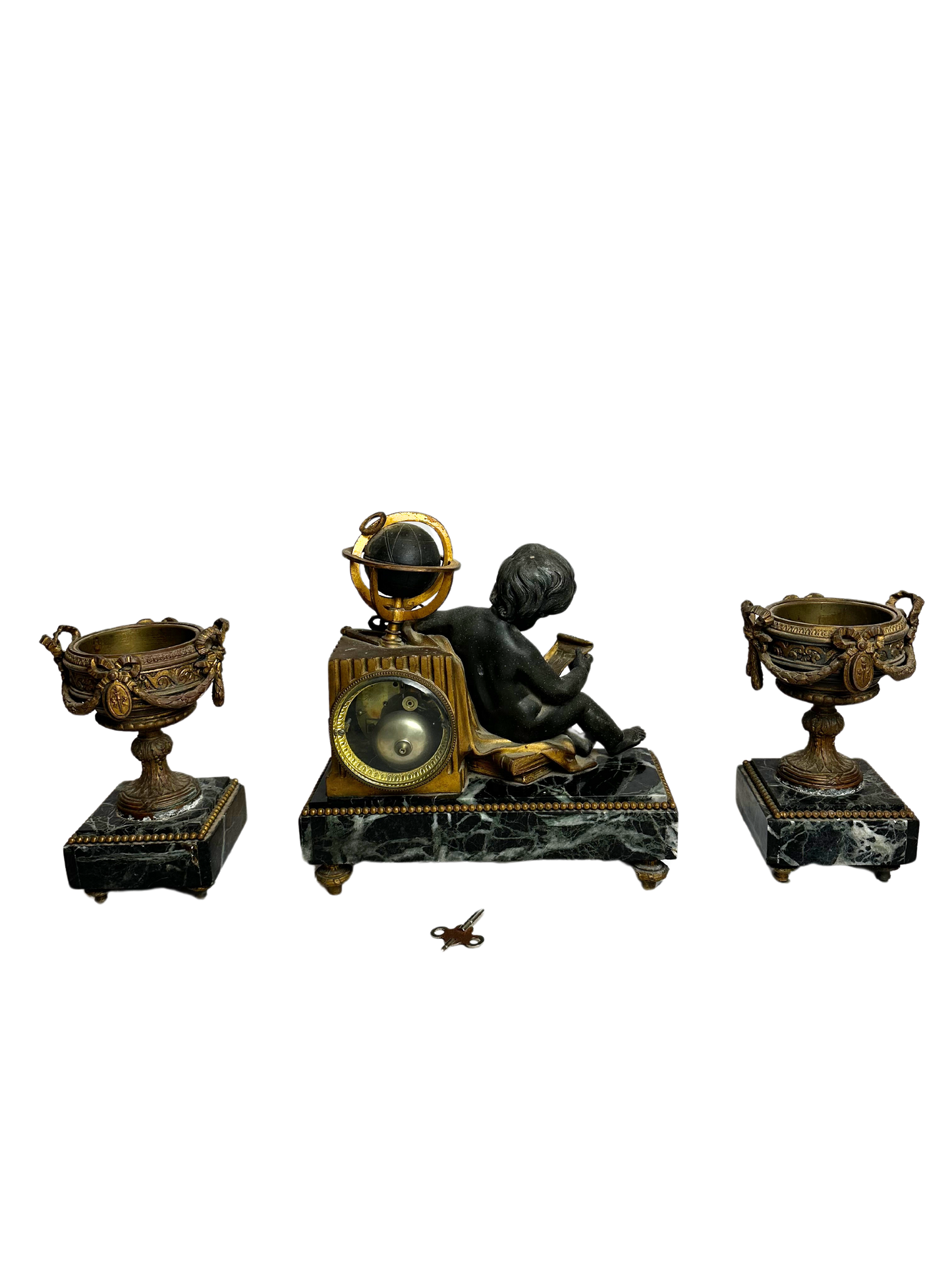
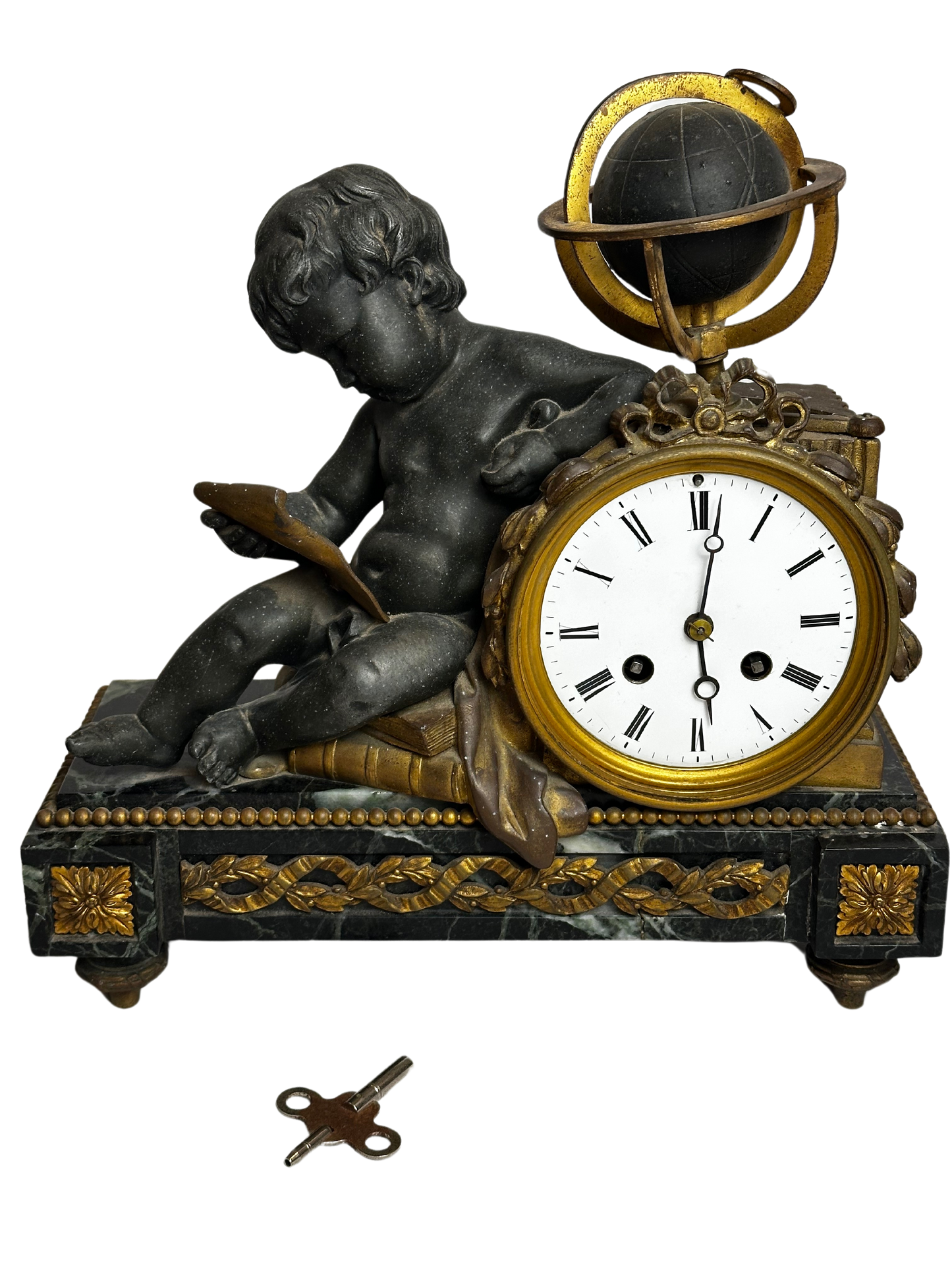

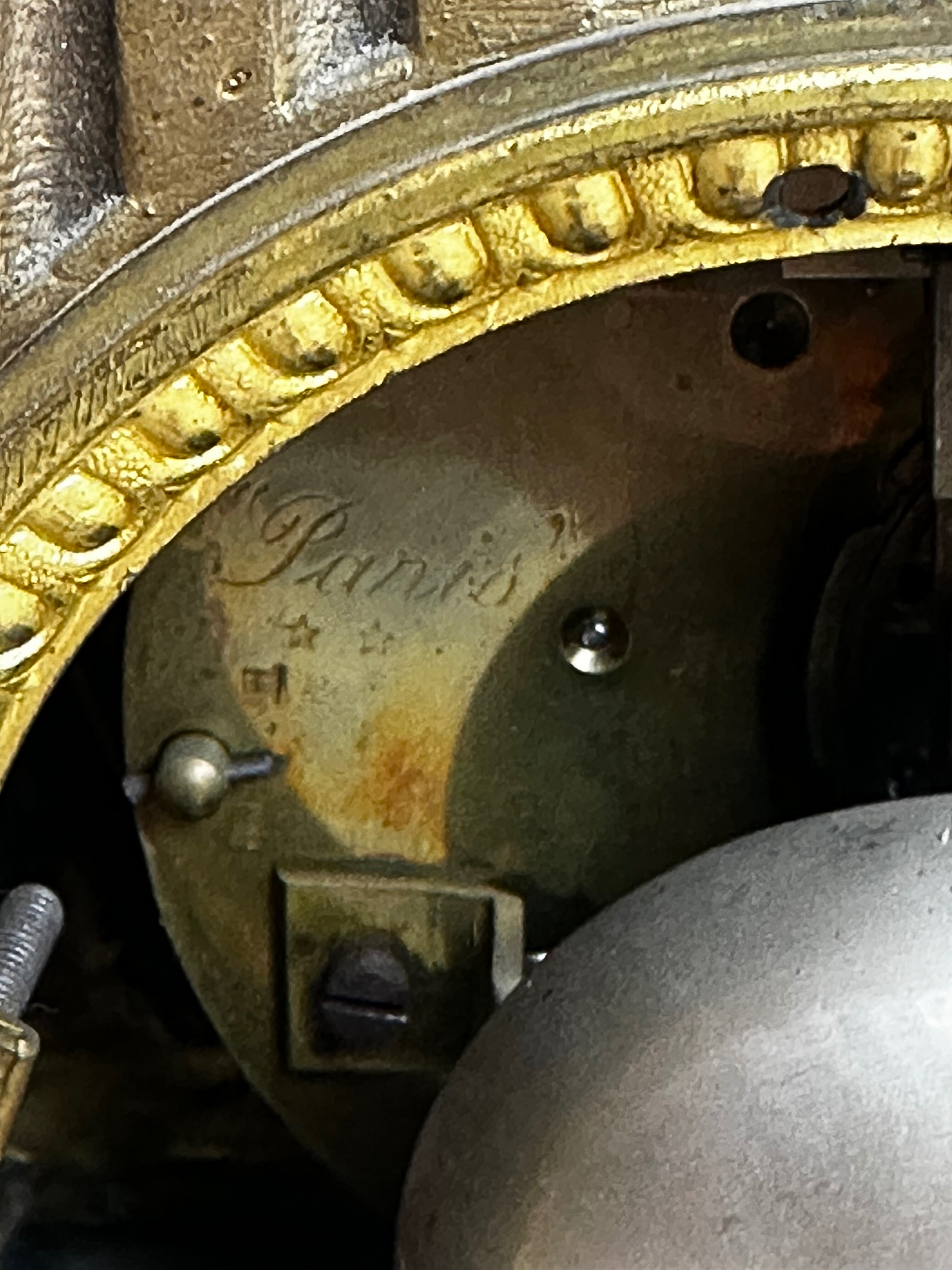

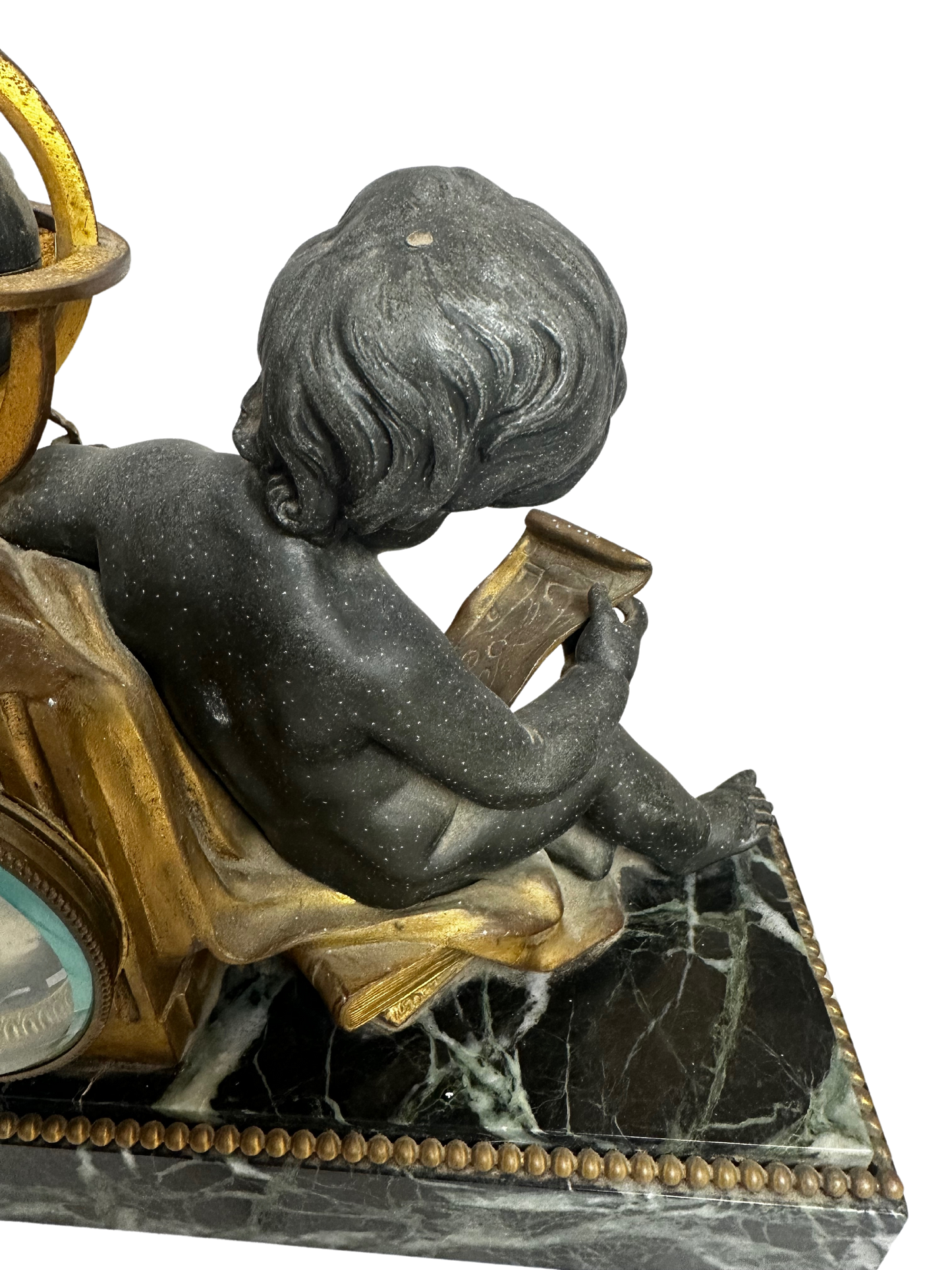
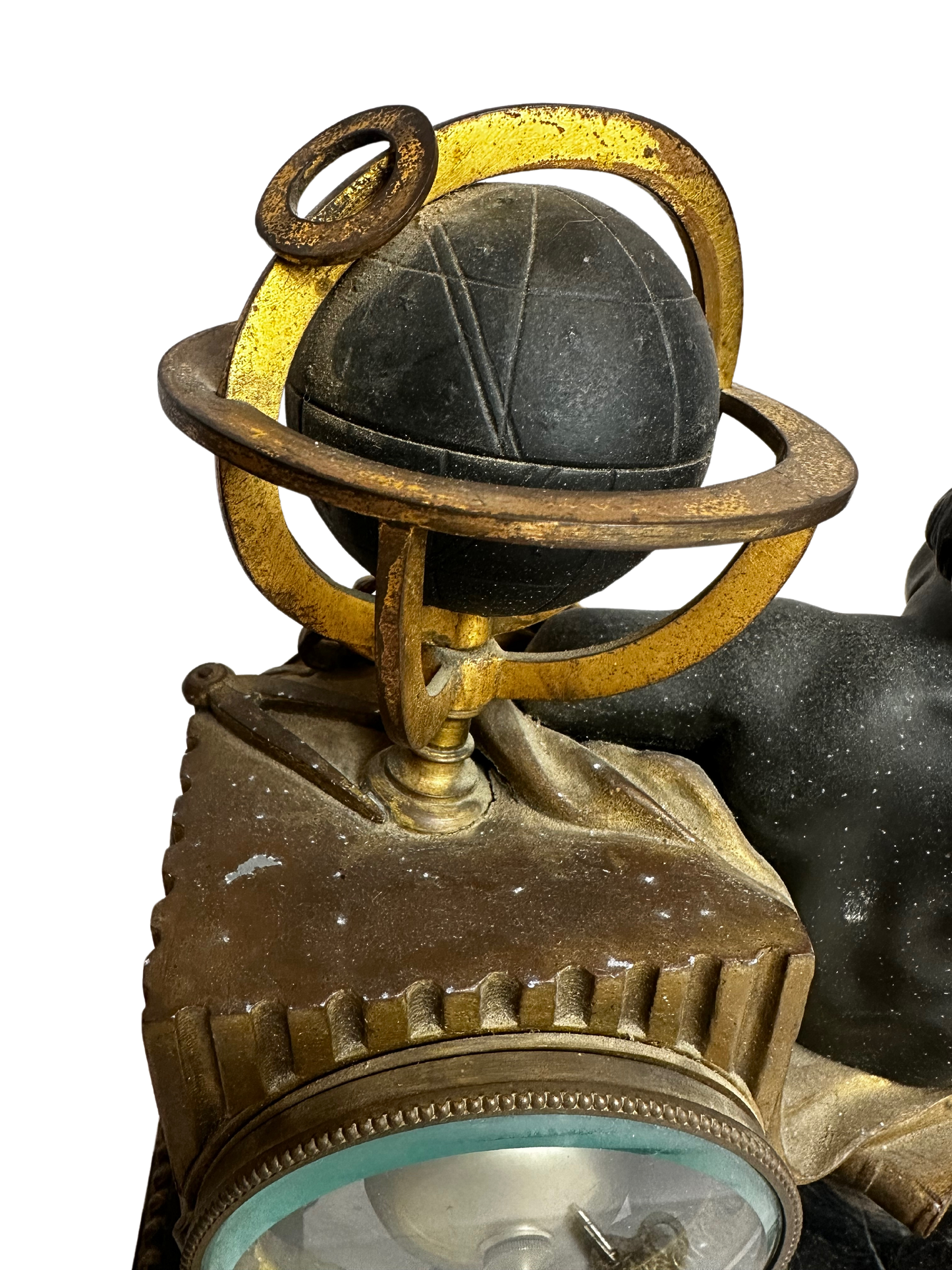
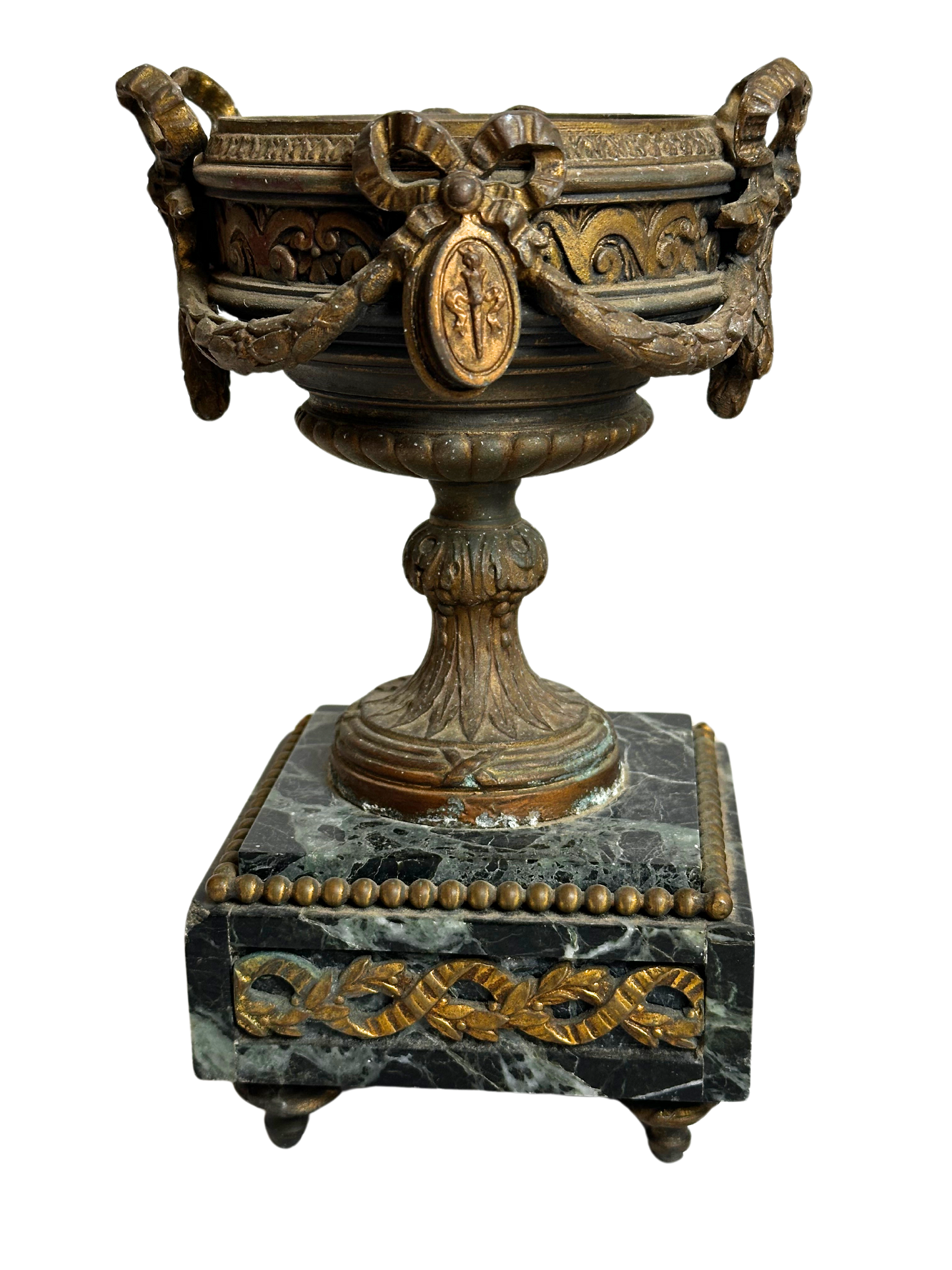
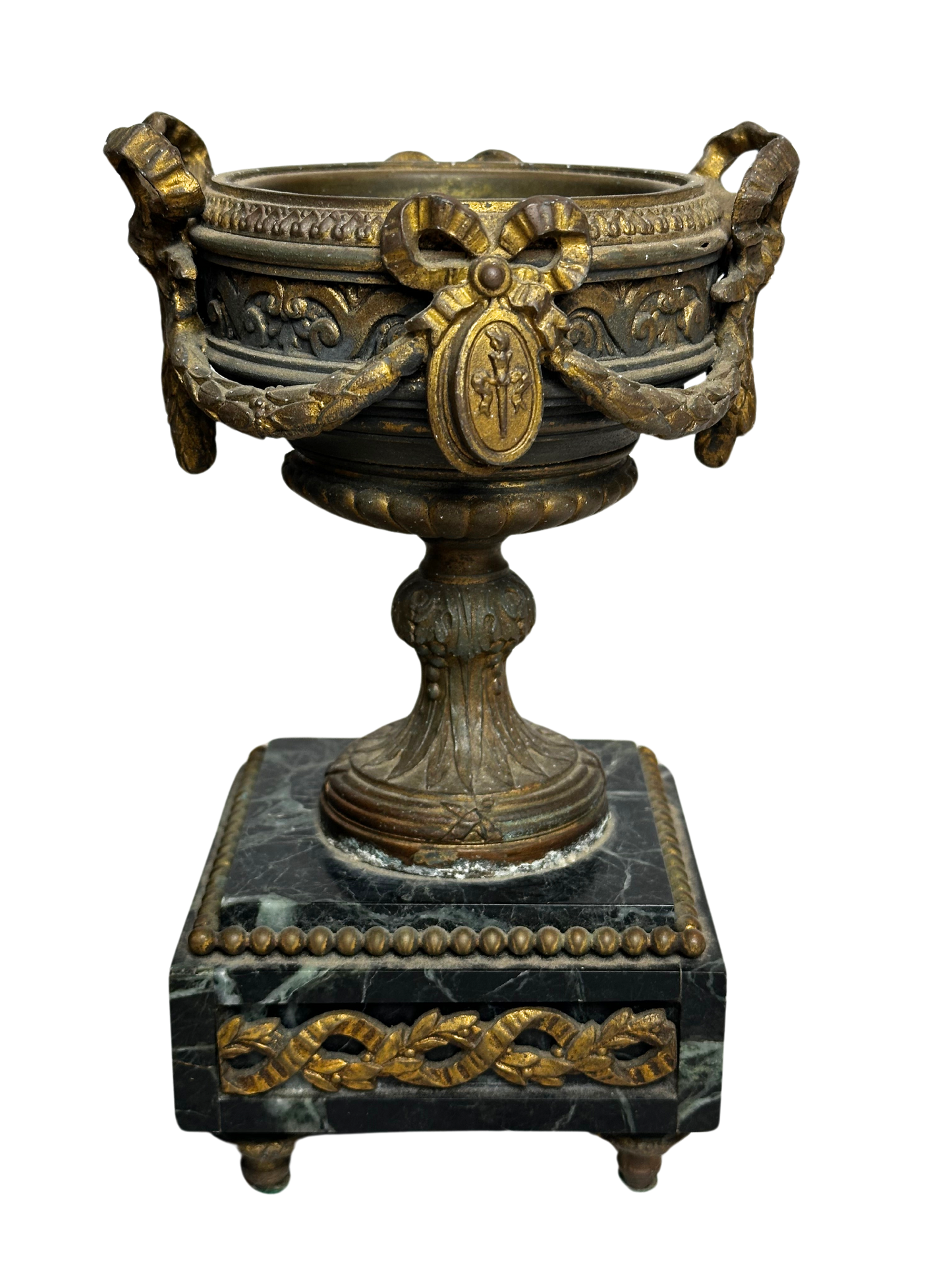
Late 19th century cherub astronomer spelter, bronze, and marble mantle clock and garniture set. The garnitures are two compote style pieces with a bow motif.
The clock movements are stamped "Paris" and "Medaille d'Argent L. Marti 1889".
The clock does not currently function.
Late 19th century cherub astronomer spelter, bronze, and marble mantle clock and garniture set. The garnitures are two compote style pieces with a bow motif.
The clock movements are stamped "Paris" and "Medaille d'Argent L. Marti 1889".
The clock does not currently function.
Clock - 11.5"w x 4.75"d x 12.5"h / Garnitures (Each) - 4.5"w x 4.5"d x 9"h
Clock - 11.5"w x 4.75"d x 12.5"h / Garnitures (Each) - 4.5"w x 4.5"d x 9"h
Mantle clock and garniture sets were a hallmark of French 19th century luxury.
In the 18th and 19th centuries, astronomy was viewed as a noble science, tied to reason, discovery, and the vastness of the universe. A cherub depicted as an astronomer, perhaps holding a globe, telescope, or celestial chart, likely symbolized the pursuit of wisdom and mankind’s fascination with the cosmos.
In art and sculpture, cherubs (or putti) were often shown engaged in scholarly or artistic pursuits, reinforcing their connection to divine knowledge and creativity. The inclusion of an astronomer cherub on a clock set is especially meaningful, as astronomy was historically crucial in measuring time. Celestial bodies dictated timekeeping before the widespread use of mechanical clocks, making this motif a direct nod to the relationship between time and the universe.
The cherub astronomer was likely inspired by the Neoclassical fascination with science and discovery, reflecting the intellectual climate of 19th-century France. Given Marti’s participation in the 1889 Exposition Universelle—a fair that showcased scientific and artistic advancements—this theme might have been a deliberate choice to link horology with astronomy and precision.
The Paris Foundry Mark suggests the piece was made by a renowned Parisian metalworker, adding to its authenticity and value.
The L. Marti Medaille d'Argent Stamp (1889) confirms the movement was manufactured in the late 19th century, marking it as a product of Marti’s award-winning period.
Léon Marti was a distinguished French clockmaker active in the late 19th century. His company, L. Marti & Cie, was based in Montbéliard, France, a region known for clockmaking excellence. The firm specialized in producing high-quality clock movements, which were often used by prestigious case makers.
One of Marti’s most notable achievements was winning a Silver Medal (Médaille d’Argent) at the 1889 Exposition Universelle in Paris, an honor that established the brand’s reputation for superior craftsmanship and innovation.
Mantle clock and garniture sets were a hallmark of French 19th century luxury.
In the 18th and 19th centuries, astronomy was viewed as a noble science, tied to reason, discovery, and the vastness of the universe. A cherub depicted as an astronomer, perhaps holding a globe, telescope, or celestial chart, likely symbolized the pursuit of wisdom and mankind’s fascination with the cosmos.
In art and sculpture, cherubs (or putti) were often shown engaged in scholarly or artistic pursuits, reinforcing their connection to divine knowledge and creativity. The inclusion of an astronomer cherub on a clock set is especially meaningful, as astronomy was historically crucial in measuring time. Celestial bodies dictated timekeeping before the widespread use of mechanical clocks, making this motif a direct nod to the relationship between time and the universe.
The cherub astronomer was likely inspired by the Neoclassical fascination with science and discovery, reflecting the intellectual climate of 19th-century France. Given Marti’s participation in the 1889 Exposition Universelle—a fair that showcased scientific and artistic advancements—this theme might have been a deliberate choice to link horology with astronomy and precision.
The Paris Foundry Mark suggests the piece was made by a renowned Parisian metalworker, adding to its authenticity and value.
The L. Marti Medaille d'Argent Stamp (1889) confirms the movement was manufactured in the late 19th century, marking it as a product of Marti’s award-winning period.
Léon Marti was a distinguished French clockmaker active in the late 19th century. His company, L. Marti & Cie, was based in Montbéliard, France, a region known for clockmaking excellence. The firm specialized in producing high-quality clock movements, which were often used by prestigious case makers.
One of Marti’s most notable achievements was winning a Silver Medal (Médaille d’Argent) at the 1889 Exposition Universelle in Paris, an honor that established the brand’s reputation for superior craftsmanship and innovation.
Late 19th Century
Late 19th Century
Spelter, Marble, Bronze
Spelter, Marble, Bronze
Round Top, TX (Originally France)
Round Top, TX (Originally France)
Spotting to spelter
Crack in top where globe meets its base
General aging to spelter and bronze detailing
Clock does not currently function (but has its pendulum)
Glass panel is missing from the front of the clock
Small flea bites to corners of marble
Spotting to spelter
Crack in top where globe meets its base
General aging to spelter and bronze detailing
Clock does not currently function (but has its pendulum)
Glass panel is missing from the front of the clock
Small flea bites to corners of marble











